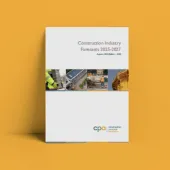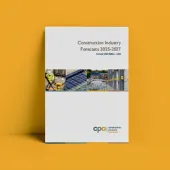Renewed optimism for construction
Construction Products Association’s latest forecast anticipates growth over next four years
THE Construction Products Association’s latest forecast anticipates that growth in private house building, infrastructure work and commercial activity is set to drive recovery in the industry over the next four years.
According to the forecast, construction output is expected to rise by 3.4% in 2014 and by a further 5.2% in 2015, and growth is projected to continue throughout the forecast period, to 2017.
However, the Association warns that considerable uncertainties remain regarding the long-term sustainability of the recovery in the industry and wider economy in the latter years of this forecast, post-2015.
Commenting on the forecast, Dr Noble Francis, economics director of the Association, said: ‘The construction industry is in a very different place to just one year earlier, when output fell to a level 15.4% below its pre-recession peak.
‘Since the first quarter of 2013 activity has picked up considerably. Initially, this was due to a rapid expansion in house building but more recently growth in new infrastructure and a recovery in London commercial activity have supplemented further rises in private housing.
‘Private housing has seen a rapid recovery, albeit from levels of house building that are half the number needed to meet the number of households created. This private housing growth has been driven by wider economic recovery and government’s Help to Buy policy.’
While there were initial concerns that this policy would fuel house price inflation, the Association says that clearly both house prices and house building have risen significantly. Housing starts in Great Britain during 2013 are estimated to have increased 24.0% and further growth rates of 16.0% in 2014 and 10.0% in 2015 are forecast.
However, after 2015, without Help to Buy to support housing market demand, there are strong concerns about whether house building will continue to improve despite the clear need for new housing. As a consequence, the Association’s forecasts anticipate the growth in private housing starts slowing in 2016.
Dr Francis continued: ‘In the second half of 2013 the infrastructure sector was a key driver of construction growth, with output in the sector forecast to increase 39.7% by 2017. This growth is primarily expected from a recovery in the roads sub-sector, where output fell by more than 50.0% in the space of two years, combined with further growth in rail construction.
‘In the medium-term, from 2015, infrastructure is also expected to be supported by double-digit growth in the energy sub-sector due to main works on the first of the new nuclear reactors at Hinkley Point C. However, the project has already been subject to considerable delays so further delays cannot be discounted, which would hinder infrastructure growth in the longer term,’ said Dr Francis.
He continued: ‘Output in the largest construction sector, private commercial, fell 33.1% between 2008 and 2012, but in 2013 major office projects in London have proved sizeable enough to start a recovery in the sector. The sector is expected to grow 2.7% in 2014 following growth of 2.4% in 2013. From 2015, wider economic recovery and a rise in demand for prime office and retail space outside London and the South East should also boost the sector.’
Dr Francis concluded: ‘The largest constraint to industry recovery continues to be public sector construction. Public non-housing output fell 27.2% between 2010 and 2012, and the sector is not anticipated to recover until the impacts of capital investment growth feed through in 2015.’









